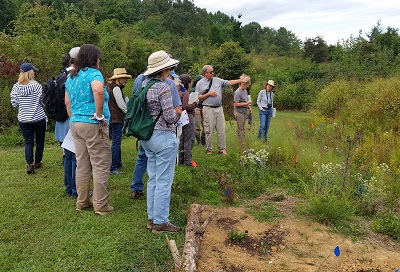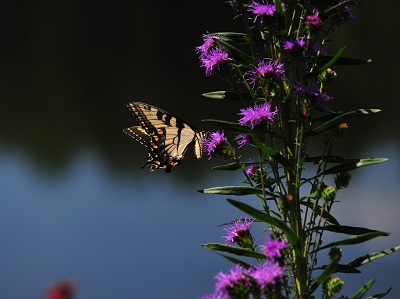When you first visit Bruce Jones’ property, you’re apt to get overwhelmed. Everywhere you turn, something is fluttering, flowers are blooming, and life is happening. “Once you get it in your blood,” Bruce says, “it’s hard to switch to TV.”

That “it” that Bruce is referring to is what has been his constant quest for the last 20 or so years—wildlife habitat restoration. Bruce and Susan Jones began this quest rather unassumingly. It began with the purchase of 75 acres about 35 years ago in Rappahannock County. They began coming to the property as weekenders, but around 1998 retired and moved there to live full-time.
Bruce’s interest in restoring his property’s biodiversity began with a human connection. The Jones’ son would often hike around the wooded area of the property and return with unusual plant species that they would try identifying. First it was a Puttyroot Orchid, then came a Cranefly Orchid, and another time, a Showy Orchis. Bruce was inspired to learn about what else was growing in his woods and fields, and that spark became a decades-long fiery dedication to restoring plants and encouraging wildlife on his land.
Bruce began tackling the invasive plant species that had taken hold of certain areas of his property and enrolled 90 acres of open land in NRCS’s Conservation Reserve Enhancement Program (CREP) and Wildlife Habitat Incentives Program (WHIP). In order to combat deer over-browse on newly installed plantings, Bruce installed a 12-acre deer fence, which had dramatic results. Native plants were finally given the opportunity to grow and thrive, without the suppressing effects of invasive plants and deer.

Today, the Jones’ property hosts a variety of native plant gardens, pollinator plots, and restored native-warm season grass meadows. Over 1,000 plant species have been identified on the property, along with 187 bird species and 56 butterfly species. Bruce has installed over 50 bluebird boxes, and the old silo in the native meadow hosts a breeding pair of barn owls. But it wasn’t an easy road.
Bruce attributes the high wildlife diversity to the native plants that he has put back into the landscape. “Native plants are the basic building blocks for the whole ecology of our area,” he says. And for the past several years, he’s been sharing his stories of failure and success with interested folks through property tours. “By exposing people to the beauty of nature, I am hoping for the ‘multiplier effect,’” Jones says.
To learn more about Bruce and Susan Jones’ work, visit their website at jonesnaturepreserve.wordpress.com
This article was featured in our Summer 2015 Member Newsletter, The Piedmont View.
